
USS Big Horn (AO-45/WAO-124/IX-207) was a Q-ship of the United States Navy named for the Bighorn River of Wyoming and Montana.

New Hampshire (BB-25) was the sixth and final Connecticut-class pre-dreadnought battleship, the last vessel of that type built for the United States Navy. Like most contemporary battleships, she was armed with an offensive armament that consisted of four large-caliber 12-inch (305 mm) guns and several medium-caliber 7 and 8-inch guns. The ship was laid down in May 1905, launched in June 1906, and commissioned in March 1908, a little over a year after the revolutionary all-big-gun HMS Dreadnought rendered ships like New Hampshire obsolescent.

USS Lexington (CV-2), nicknamed "Lady Lex", was the name ship of her class of two aircraft carriers built for the United States Navy during the 1920s. Originally designed as a battlecruiser, she was converted into one of the Navy's first aircraft carriers during construction to comply with the terms of the Washington Naval Treaty of 1922, which essentially terminated all new battleship and battlecruiser construction. The ship entered service in 1928 and was assigned to the Pacific Fleet for her entire career. Lexington and her sister ship, Saratoga, were used to develop and refine carrier tactics in a series of annual exercises before World War II. On more than one occasion these included successfully staged surprise attacks on Pearl Harbor, Hawaii. The ship's turbo-electric propulsion system allowed her to supplement the electrical supply of Tacoma, Washington, during a drought in late 1929 to early 1930. She also delivered medical personnel and relief supplies to Managua, Nicaragua, after an earthquake in 1931.

USS Underhill (DE-682) was a Buckley-class destroyer escort of the United States Navy during World War II. Built in 1943, she served in the Atlantic, the Mediterranean, and the Pacific until her sinking in a suicide attack by a Japanese Kaiten manned torpedo on 24 July 1945.

USS Wisconsin (BB-64) is an Iowa-class battleship built for the United States Navy (USN) in the 1940s and is currently a museum ship. Completed in 1944, the ship was assigned to the Pacific Theater during World War II, where she participated in the Philippines campaign and the Battles of Iwo Jima and Okinawa. The battleship shelled the Japanese home islands shortly before the end of the war in September 1945. During the Korean War, Wisconsin shelled North Korean targets in support of United Nations and South Korean ground operations, after which she was decommissioned. She was reactivated in 1986; after a modernization program, she participated in Operation Desert Storm in January – February 1991.
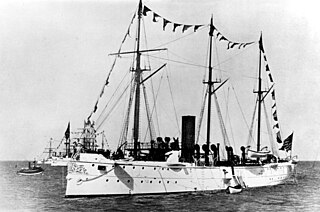
USS Bennington was a member of the Yorktown class of steel-hulled, twin-screw gunboats in the United States Navy in the late 19th and early 20th centuries. She was the first U.S. Navy ship named in honor of the town of Bennington, Vermont, site of the Battle of Bennington in the American Revolutionary War.
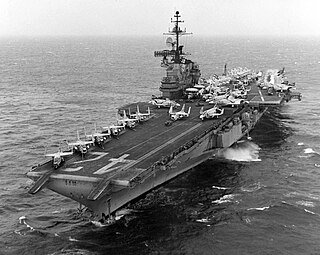
USS Franklin D. Roosevelt (CVB/CVA/CV-42) was the second of three Midway-class aircraft carriers. To her crew, she was known as "Swanky Franky," "Foo-De-Roo," or "Rosie," with the last nickname probably the most popular. Roosevelt spent most of her active deployed career operating in the Mediterranean Sea as part of the United States Sixth Fleet. The ship was decommissioned in 1977 and was scrapped shortly afterward. She was the first aircraft carrier of the United States Navy to be named in honor of a president of the United States.

USS Leary (DD-158) was a Wickes-class destroyer in the United States Navy during World War II. She was named for Lieutenant Clarence F. Leary, posthumously awarded the Navy Cross in World War I.
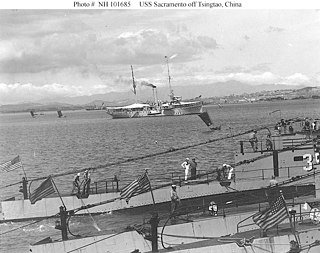
The second USS Sacramento (PG-19) was a gunboat in the United States Navy.

USS Memphis (CL-13) was an Omaha-class light cruiser, originally classified as a scout cruiser, of the United States Navy. She was the fourth Navy ship named for the city of Memphis, Tennessee.
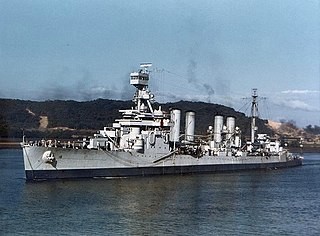
USS Concord (CL-10) was an Omaha-class light cruiser, originally classified as a scout cruiser, of the United States Navy. She was the fourth Navy ship named for the town of Concord, Massachusetts, the site of the first battle of the American Revolution. She spent the first nine years of her career in the Atlantic as part of the Scouting Force. Concord transferred to the Pacific in 1932 and spent the rest of her career, except for the winter of 1938–1939, stationed there. Her home port moved to Pearl Harbor in April 1940, but she escaped the attack on Pearl Harbor because she was in San Diego for an overhaul.
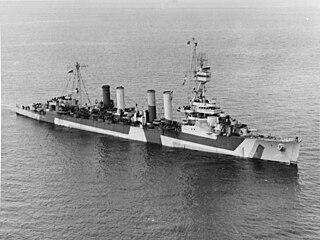
USS Detroit (CL-8) was an Omaha-class light cruiser, originally classified as a scout cruiser, of the United States Navy. She was the fourth Navy ship named for the city of Detroit, Michigan. She spent her first eight years as part of the Scouting Fleet either in the Atlantic or Mediterranean. Her first duty was to assist in the USAAS's first aerial circumnavigation of the world in 1924 and transported the United States Secretary of State Frank B. Kellogg, in 1927, from Ireland to France for the negotiations that led to the signing of the Kellogg-Briand Pact. In 1931 she joined the Battle Force, where her home port was San Diego until moving to Pearl Harbor in 1941. Detroit was moored next to her sister Raleigh when the Japanese attacked on the morning of 7 December 1941.

USS Trenton (CL-11) was an Omaha-class light cruiser, originally classified as a scout cruiser, of the United States Navy. She was the second Navy ship named for the city of Trenton, New Jersey. She spent most of her pre-war career moving between the Atlantic and the Pacific. Trenton joined the Special Service Squadron in 1934, for a good-will tour of Latin America. In May 1939, she would join Squadron 40-T in protecting American interests during the Spanish Civil War and not return to the US until July 1940, when she carried the royal family of Luxembourg, fleeing from the Nazi occupation of their country.

USS Borie (DD-215) was a Clemson-class destroyer in the United States Navy during World War II. She was the first ship named for Ulysses S. Grant's Secretary of the Navy, Adolph E. Borie. She served in the Black Sea, the Asiatic Fleet and the Caribbean between the wars, and in the Battle of the Atlantic, the long campaign to protect Allied shipping from German U-boats during World War II. As part of the antisubmarine Hunter-killer Group unit Task Group 21.14, the crew earned a Presidential Unit Citation for its "extraordinary performance." Borie also earned distinction in her final battle with U-405 in November 1943, exchanging small arms fire with and ramming the surfaced U-boat, although she was crippled during the engagement and thereafter scuttled by friendly ships.

USS Hanson (DD/DDR-832) was a Gearing-class destroyer of the United States Navy named after First Lieutenant Robert M. Hanson of the United States Marine Corps squadron VMF-215. Hanson was a quintuple ace and was posthumously awarded the Medal of Honor.

The fourth USS Surprise and fifth American naval ship of the name was an Asheville-class patrol gunboat that served in the United States Navy from 1969 to 1973.

The seventh USS Niagara (CMc-2/PG-52/AGP-1) was an auxiliary ship of the United States Navy during World War II.

The Fourth Battle of Topolobampo was a single ship action fought during the Mexican Revolution and the last naval battle of the Topolobampo Campaign. In June 1914, a Huertista gunboat sank a Constitutionalist gunboat off Topolobampo, Sinaloa in the Gulf of California.

Edward William Hanson was a United States Navy Vice admiral and the governor of American Samoa from June 26, 1938, to July 30, 1940. As Governor of American Samoa, Hanson believed that the native Samoans had a good way of life, and did little to interfere with established practices on the islands.

The Erie-class gunboats were a class of gunboats built by the United States prior to World War II. The class was designed in 1932, and commissioned into the United States Navy in 1936: Erie (PG-50) and Charleston (PG-51). The Eries had a design speed of 20 knots and a main armament of four 6-inch (152 mm) guns in single mounts with four 1.1-inch (28 mm) quadruple mount anti-aircraft guns.
























